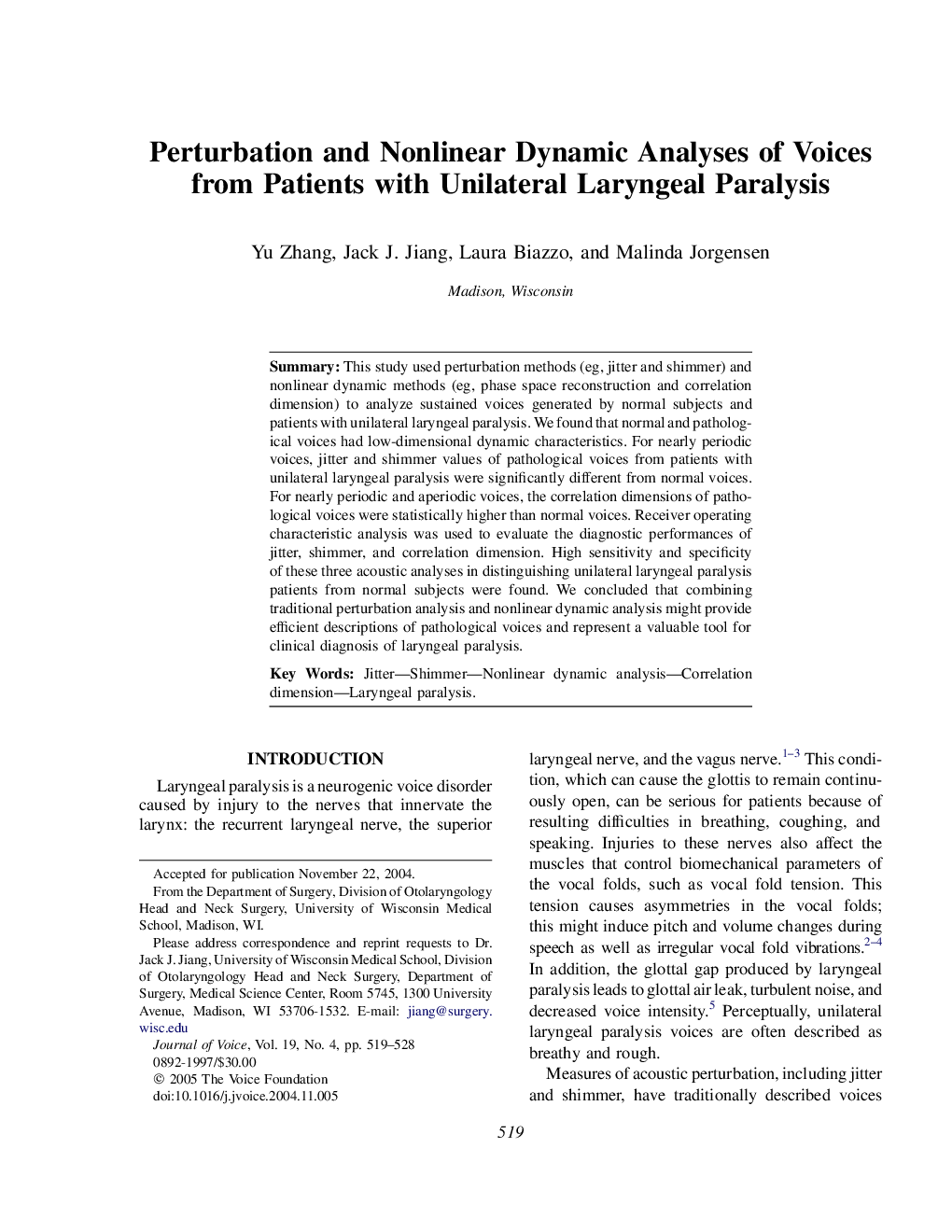| Article ID | Journal | Published Year | Pages | File Type |
|---|---|---|---|---|
| 10519692 | Journal of Voice | 2005 | 10 Pages |
Abstract
This study used perturbation methods (eg, jitter and shimmer) and nonlinear dynamic methods (eg, phase space reconstruction and correlation dimension) to analyze sustained voices generated by normal subjects and patients with unilateral laryngeal paralysis. We found that normal and pathological voices had low-dimensional dynamic characteristics. For nearly periodic voices, jitter and shimmer values of pathological voices from patients with unilateral laryngeal paralysis were significantly different from normal voices. For nearly periodic and aperiodic voices, the correlation dimensions of pathological voices were statistically higher than normal voices. Receiver operating characteristic analysis was used to evaluate the diagnostic performances of jitter, shimmer, and correlation dimension. High sensitivity and specificity of these three acoustic analyses in distinguishing unilateral laryngeal paralysis patients from normal subjects were found. We concluded that combining traditional perturbation analysis and nonlinear dynamic analysis might provide efficient descriptions of pathological voices and represent a valuable tool for clinical diagnosis of laryngeal paralysis.
Related Topics
Health Sciences
Medicine and Dentistry
Otorhinolaryngology and Facial Plastic Surgery
Authors
Yu Zhang, Jack J. Jiang, Laura Biazzo, Malinda Jorgensen,
